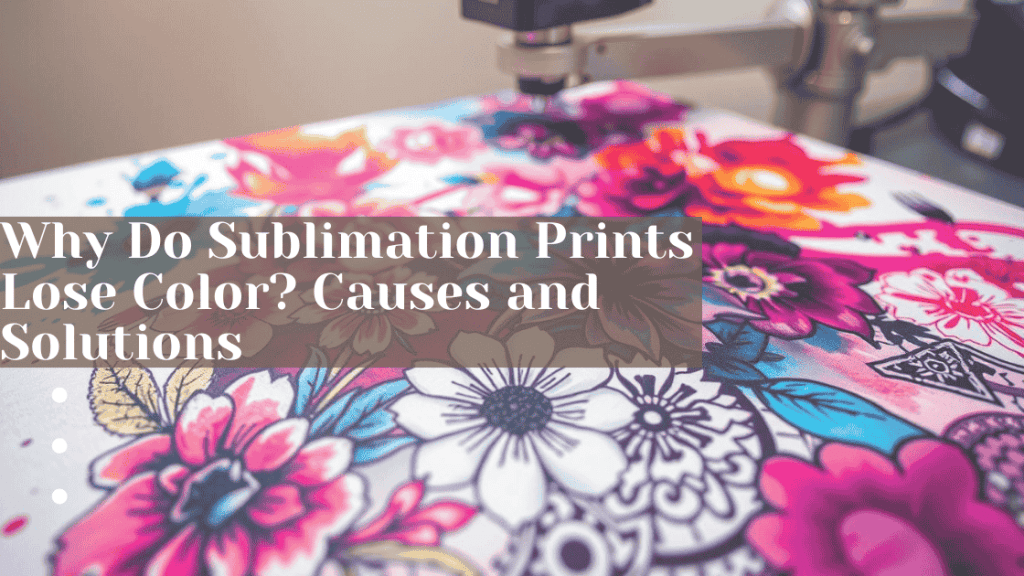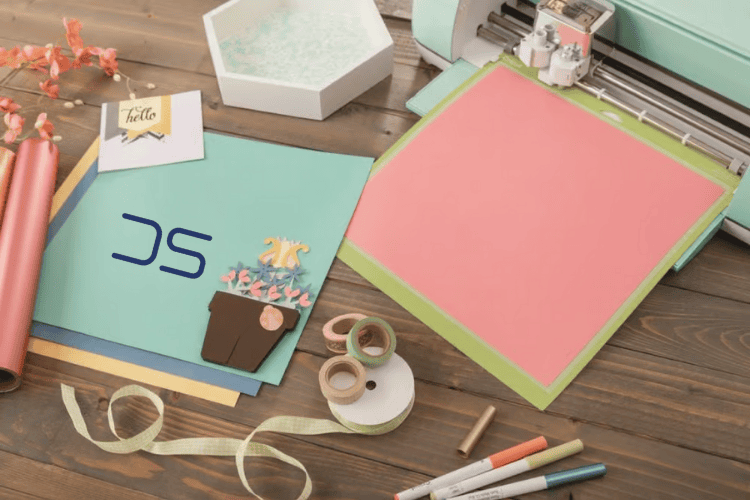“Why Do Sublimation Prints Lose Color? Causes and Solutions”
Sublimation printing is a favorite for making bright, full-color designs on many materials. But, it’s common for these prints to lose color over time. Knowing why this happens is key to keeping sublimated products looking great.
Color loss in sublimation prints comes from several sources. These include environmental factors, mistakes in making the print, and the quality of the material. All these can affect how the final product looks, leading to color loss.
Sublimation printing uses heat and pressure to transfer dye onto materials. When done right, it creates amazing designs. But, if color loss happens, it can be a letdown, especially for products meant to last.
By learning about sublimation printing and the signs of color loss, we can tackle this problem. We can make sure our prints stay bright and vibrant.
Key Takeaways
- Sublimation printing can result in color loss due to various factors.
- Understanding the causes of color loss is essential to finding effective solutions.
- Environmental conditions, production mistakes, and material quality issues can all contribute to color loss in sublimation prints.
- Sublimation printing requires careful consideration of heat, pressure, and material selection to achieve optimal results.
- By taking steps to prevent or mitigate color loss, you can create high-quality, long-lasting sublimation prints.
- Sublimation printing color loss can be prevented with proper techniques and material selection.
Understanding Sublimation Printing Basics
Sublimation printing is a special way to transfer dye onto materials using heat and pressure. It makes vibrant, full-color images on various substrates like fabrics, ceramics, and metals. Knowing the basics of sublimation printing is key to getting great results. This includes understanding the science behind color transfer and the role of sublimation ink.
The sublimation process uses sublimation techniques to transfer dye onto the substrate. Heat, pressure, and time change the dye from solid to gas. This lets it penetrate the substrate and create a lasting image. The quality of the sublimation ink greatly affects the final colors, with better inks making colors more vibrant and lasting.
- Temperature and pressure settings: These must be carefully controlled to ensure optimal color transfer and to prevent damage to the substrate.
- Substrate selection: Different materials require specific sublimation techniques and settings to achieve the best results.
- Ink quality: Using high-quality sublimation ink is crucial for producing vibrant, long-lasting colors.
By grasping the basics of sublimation printing and the importance of sublimation techniques and sublimation ink, you can make professional-looking items. You can also create a wide range of unique and customized products.
Common Signs of Color Loss in Sublimation Prints
Sublimation prints can fade, which changes how they look and their print durability. Look for fading, discoloration, or uneven colors to spot color loss. Catching it early helps stop it from getting worse.
Some common signs of color loss include:
- Discoloration: a change in the color tone or shade, which can be caused by exposure to sunlight or other environmental factors
- Fading: a decrease in the color intensity or brightness, which can be caused by washing or wear and tear
- Uneven color distribution: an inconsistent color pattern, which can be caused by incorrect printing settings or poor material quality
Regularly checking sublimation prints can spot these signs early. This lets you act fast to stop more damage. By watching your prints and fixing problems quickly, you can keep them looking good longer.
Knowing the signs of color loss helps you prevent or fix these problems. This way, your sublimation prints stay bright and last longer.
Why Do Sublimation Prints Lose Color? Causes and Solutions
Sublimation prints can fade due to several reasons. Knowing these causes helps prevent color loss and keeps prints looking good for longer. One main reason is using low-quality sublimation paper. This paper can’t handle the heat and pressure of the heat press, causing colors to fade and prints to last less.
Other factors like sunlight, moisture, and extreme temperatures also cause color loss. To fight these, keep your prints in a cool, dry spot, out of sunlight. Also, using top-notch heat press and sublimation paper helps keep colors bright and prints lasting.
Making mistakes during production, like wrong temperature or time settings, can also cause color loss. To avoid these, always follow the heat press and sublimation paper maker’s guidelines. By doing this and using quality materials, your sublimation prints will stay colorful and vibrant.
Environmental Factors
- Exposure to sunlight
- Moisture
- Extreme temperatures
Production Mistakes
- Incorrect temperature settings
- Incorrect time settings
- Using low-quality sublimation paper
Material Quality Issues
- Using low-quality sublimation paper
- Using a low-quality heat press
The Impact of Heat and Pressure on Color Retention
Heat and pressure are key in sublimation techniques. They help decide how well colors stay in the final product. The right heat and pressure settings depend on the material used. Finding this balance is crucial for the best color retention.
Using the right sublimation techniques can prevent color loss. This ensures the final product is vibrant and lasts long. Color retention is very important in sublimation printing. It can be influenced by the ink type, material, and the heat and pressure used during printing.
When optimizing heat and pressure settings, consider these factors:
- Material type and thickness
- Ink composition and quality
- Heat press temperature and time settings
- Pressure adjustment and distribution
Understanding how these factors work together can help improve your sublimation techniques. This way, you can make high-quality, long-lasting prints with great color retention.
With the right heat, pressure, and techniques, you can get professional-looking results. These results will have excellent color retention. Your sublimation prints will stand out and last longer.
| Factor | Impact on Color Retention |
|---|---|
| Heat Press Temperature | Affects ink sublimation and color transfer |
| Pressure Adjustment | Influences ink penetration and color distribution |
| Material Type | Affects ink absorption and color retention |
Choosing the Right Materials for Lasting Colors
In sublimation printing, the quality of materials is key. To get lasting colors, pick the right substrates, sublimation paper, and ink types. The quality of sublimation paper is especially important for color retention and appearance.
A top-notch sublimation paper should have a smooth finish and be free of impurities. It also needs the right coating for ink absorption. The ink types used also matter, as some fade faster than others. Choosing the right materials ensures your prints stay vibrant longer.
Substrate Selection Guide
Choosing the right substrate is crucial in sublimation printing. It affects how well the ink bonds with the material. Look for substrates like ceramic, glass, and metal that can handle high temperatures and have a smooth surface.
Quality Indicators for Sublimation Paper
When picking sublimation paper, check its weight, thickness, and coating. A good paper should weigh at least 100 gsm and be about 0.1 mm thick. It should also have a coating for the best ink absorption.
Best Ink Types for Color Longevity
The ink type used in sublimation printing impacts color longevity. Here are some top ink types:
- Disperse dyes: known for their vibrant colors and resistance to fading
- Reactive dyes: offer excellent color retention and are suitable for printing on cotton and other natural fibers
- Pigment inks: provide a wide color gamut and are resistant to fading and bleeding
By choosing the right materials and following the guide, your sublimation prints will stay vibrant longer. Always check the sublimation paper quality and ink types for the best results.
| Material | Characteristics | Benefits |
|---|---|---|
| Sublimation paper | Smooth finish, free of impurities, right coating | Optimal ink absorption, vibrant colors |
| Disperse dyes | Vibrant colors, resistant to fading | Long-lasting colors, excellent color retention |
| Reactive dyes | Excellent color retention, suitable for natural fibers | Wide color gamut, resistant to fading and bleeding |
Proper Storage and Handling of Sublimated Items
To keep sublimated products looking great, follow some key storage recommendations and handling instructions. Keep them away from sunlight, moisture, and extreme temperatures. This helps prevent color loss and keeps your items looking vibrant longer.
Here are some tips for storing and handling sublimated items:
- Store sublimated items in a cool, dry place, away from direct sunlight.
- Use acid-free tissue paper or cloth to wrap the items, preventing them from coming into contact with other materials that may cause damage.
- Handle sublimated items with care, avoiding scratches, folds, or creases that can damage the print.
By following these storage recommendations and handling instructions, you can keep your sublimated products looking their best. Always handle them with care and store them to prevent damage or color loss.
Also, check out this table for quick tips on storing and handling sublimated items:
| Item Type | Storage Recommendations | Handling Instructions |
|---|---|---|
| Sublimated Fabric | Cool, dry place | Handle with care, avoid folds or creases |
| Sublimated Ceramic | Away from direct sunlight | Use acid-free tissue paper or cloth to wrap |
By following these guidelines, your sublimated products will stay vibrant and of high quality for a longer time.
Temperature and Time Settings for Optimal Color Transfer
To get the best results in sublimation printing, knowing about heat press settings and timing is key. The right temperature and time can greatly improve the quality of your prints.
The ideal temperature for a heat press is between 350°F to 400°F, depending on the material. For instance, ceramic and glass need a higher temperature. On the other hand, fabrics and paper do better with a lower temperature. It’s also important to follow timing recommendations to avoid fading or discoloration of colors.
Heat Press Temperature Guide
- Ceramic: 380°F – 400°F
- Fabric: 350°F – 370°F
- Glass: 390°F – 410°F
- Paper: 340°F – 360°F
By using these heat press settings and timing tips, your sublimation prints will be vibrant and last long. Always check the manufacturer’s instructions for the best temperature and time for your heat press machine.
Preventing Color Fading During Production
To keep colors bright in sublimation prints, it’s key to use good color fading prevention methods. This means choosing top-notch materials and perfecting production techniques. This way, the prints will stay colorful and look great.
Some important steps to stop color fading include:
- Choosing the right substrate and ink for each job
- Setting the right heat and pressure for sublimation
- Storing and handling sublimated items correctly
By sticking to these tips and using smart color fading prevention methods, companies can make top-notch sublimation prints. These prints will meet customer needs. Also, using the latest production techniques makes the printing process smoother and cuts down on mistakes.
By focusing on color fading prevention and improving production techniques, businesses can stay ahead in the market. They can also give their customers amazing results.
| Production Technique | Color Fading Prevention Benefit |
|---|---|
| Optimized Heat Settings | Less chance of color loss from too much heat |
| Proper Ink Selection | Better color brightness and lasting power |
| Advanced Substrate Selection | Better color hold and print quality |
Post-Production Care and Maintenance
Proper care and maintenance after production are key to keeping sublimated items looking great. It’s important to follow certain steps to keep them vibrant and strong. This way, you can stop colors from fading and prevent damage to your items.
Cleaning Guidelines
Cleaning sublimated items needs to be done carefully to avoid harm. Here are some tips to help:
- Avoid harsh chemicals or abrasive cleaners
- Use mild soap and lukewarm water for cleaning
- Gently pat dry the item with a soft cloth
Storage Recommendations
Storing sublimated items right is crucial for their quality. Keep them in a cool, dry spot, away from sunlight. This helps stop colors from fading and protects the material.
Handling Instructions
Handling sublimated items with care is important to avoid damage. Don’t fold or crease them, as this can lead to cracks. By following these tips, you can make your sublimated products last longer.
| Maintenance Tips | Benefits |
|---|---|
| Regular cleaning | Prevents dirt buildup and color loss |
| Proper storage | Prevents color fading and material damage |
| Gentle handling | Prevents cracks and damage to the material |
Troubleshooting Common Color Issues
Dealing with color issues in sublimation prints can be tough. Finding the cause and fixing it is key. Issues like uneven colors, fading, or discoloration are common.
To fix these problems, start with these steps:
- Make sure the right color profile is set in your print settings.
- Check if the sublimation paper and ink match your printer and material.
- Look at the printed item for any color problems like fading or discoloration.
By taking these steps and using the right troubleshooting methods, you can solve common color issues. Always use top-notch materials and follow the maker’s guidelines to avoid color issues.
Also, think about how the environment can affect your sublimation prints’ colors. Being proactive in troubleshooting and upkeep helps keep your prints looking great for a long time.
| Common Color Issues | Cause | Solution |
|---|---|---|
| Uneven coloring | Incorrect print settings | Adjust print settings and retry |
| Fading | Low-quality ink or paper | Use high-quality ink and paper |
| Discoloration | Incorrect color profile | Use the correct color profile |
Professional Tips for Long-Lasting Sublimation Prints
To get long-lasting sublimation prints, follow professional tips and guidelines. Quality control is key for durable and color-rich prints. By doing this, your products will meet top quality standards.
Quality control includes checking materials, watching the production process, and testing the final products. This helps spot and fix any quality issues. Also, using the right temperature and pressure settings is crucial for great sublimation results.
Quality Control Measures
- Inspecting materials for quality and consistency
- Monitoring production processes to prevent errors
- Testing final products for color retention and durability
By following these tips and quality control steps, your sublimation prints will be top-notch and last long. Keeping your equipment in good shape is also important. This way, you can make prints that are both bright and long-lasting.
Conclusion
Exploring why sublimation prints lose their color shows us how to keep them vibrant. With the right knowledge and care, this printing method can create lasting, beautiful results. Knowing the science, spotting common problems, and using best practices helps keep prints looking great for years.
It’s important to always improve and keep up with new sublimation advancements. This dedication to quality opens up endless possibilities in sublimation printing. It allows for creating unique, lasting designs that impress everyone.
FAQ
What is sublimation printing?
Sublimation printing uses heat to transfer dye onto materials like polyester or plastic. The dye turns into gas and gets into the material, making it permanent.
What are the common signs of color loss in sublimation prints?
Signs of color loss include fading, discoloration, and uneven colors. These changes can happen over time.
What are the main causes of color loss in sublimation prints?
Color loss can be due to environmental factors, mistakes in production, or poor material quality. UV light, heat, and moisture can fade colors. Mistakes in heat and pressure can also cause color loss. Low-quality materials can lead to fading too.
How does heat and pressure impact color retention in sublimation prints?
Heat and pressure are key in sublimation printing. The right settings help colors stay vibrant. Wrong settings can cause colors to fade or not transfer evenly.
How can I choose the right materials to ensure lasting colors in my sublimation prints?
Choose high-quality polyester or polymer-coated materials for your prints. Use good sublimation paper and ink. This ensures colors last longer.
How can I properly store and handle sublimated items to prevent color loss?
Keep sublimated items away from sunlight, heat, and moisture. This prevents fading. Handle them gently to avoid damage.
What temperature and time settings should I use for optimal color transfer in sublimation printing?
The temperature and time for sublimation printing vary by material. Generally, use 375°F to 400°F and 30 seconds to 1 minute. Always check the manufacturer’s guidelines for the best results.
How can I prevent color fading during the production process?
Control the environment and use quality materials. Follow best practices for heat press use. This helps prevent fading during production.
What post-production care and maintenance are required to maintain the color of my sublimated items?
Clean printed surfaces gently with a soft cloth. Avoid harsh chemicals. Store items in a cool, dry place away from sunlight. Handle them carefully to prevent damage.
How can I troubleshoot common color issues with my sublimation prints?
Check heat press settings and material quality if colors are uneven or fading. Look for environmental factors too. Fixing these issues can improve your prints’ quality.
What professional tips can I use to achieve long-lasting sublimation prints?
For lasting prints, focus on quality control and expert techniques. Keep your equipment in top shape. Stay updated with industry best practices to improve your skills.



